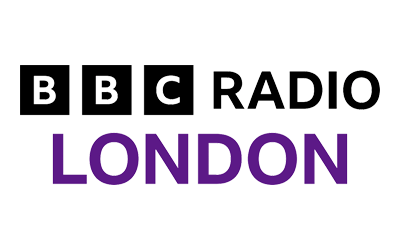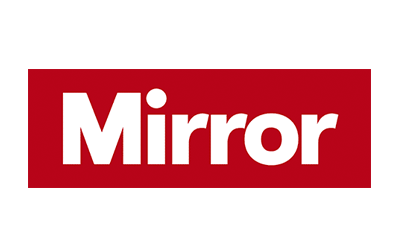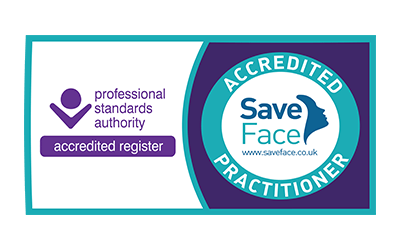A thigh lift is a surgical procedure that reduces the excess skin and fat on the thighs, leaving a firmer, smoother contour. Here are some of our most frequently asked questions we get asked at our thigh lift consultations. If you’d like any more information, call 02037 335839 to speak to one of the team or arrange a thigh lift consultation.
Quick Links
FAQs for Thigh Lift Surgery
A Thigh Lift is a procedure which lifts and tightens the loose skin on the inside area of the thighs. It does not usually lift the front or the back area of the thigh. Sagging of these areas as well as the outer thigh and buttock regions is usually best treated by way of a Body lift which is a much larger operation, and is associated with a scar right around the entire circumference of your body at the level of your waist.
Unlike liposuction which only reduces the unwanted fat, a thigh lift will also remove the skin and therefore tighten the inner aspect of the thighs.
This will be decided at your consultation. If you are a smoker you will be asked to stop smoking well in advance of surgery as smoking can result in poor healing. The best candidates are medically healthy men and women who are within a few pounds (i.e. 10%) of their ideal weight.
If you are significantly more than this then you will be asked to reduce some weight before going ahead with any surgery. A thigh lift is usually performed to remove obviously loose, hanging skin, which has arisen as a result of some weight loss, and which will not go with even the most diligent of exercises and diet.
There are two different types of thigh lifts that can be performed depending on the extent of skin laxity. If the skin laxity and rippling is mostly limited to the upper inner thighs, a Medial upper Thigh Lift can be performed. In this procedure the excess skin and fat is removed in the upper inner thigh region and the scar is located along the groin crease extending down inwards behind and into the buttock crease.
This scar is usually well hidden. In cases where people have lost a significant amount of weight and are left with extensive laxity and rippling of the skin along the entire inner aspect of the thigh all the way down to the knees, then an Extended medial Thigh Lift is usually performed. In addition to the scar of the groin crease, there is also a long vertical scar that extends along the inner thigh(similar to the inseam of a pair of trousers) many times right down to the inner knee region.
This vertical scar enables us to remove the lax excessive skin of the entire thigh just as the inner seam of a pair of trousers determines the width of a trouser leg. As a result of the extensive skin involvement, this procedure is usually more involved than the medial upper thigh lift. However when extensive skin laxity and fat excess is present then this is usually the only option.
Liposuction removes fat cells and does not affect the skin. Therefore if your problem is due to loose skin, performing any form of liposuction will lead to an exacerbation of your problem and make the area look worse with excess loose skin developing. The only time liposuction is a better choice is when there is a lot of fat and the skin is tight. When the skin is loose, a thigh lift is usually the best choice.
Yes. Both the Medial and Extended Thigh Lift can often be combined with limited Liposuction in order to better contour the legs and also to reduce the size of the “saddle bags” or love handles or other areas.
The basic aim of a Thigh lift involves removing excess skin along with associated fat from the inner thighs and then suturing the ends together. In principle it is a very straightforward surgical procedure. However due to the large area and length of wound that requires suturing it is somewhat time consuming and can take up to 2 hours to complete the procedure.
The incision line is sutured with dissolving stitches and surgical tapes are then applied to the surface of the skin. A bandage is then applied around the thighs in order to apply some compression and reduce any swelling and bleeding.
Once you’re back in your room and recovered, you will notice that you will be wearing a compression garment which will help control the swelling and subsequent bruising. Mr. Karidis prefers to mobilize his patient early and so once you feel reasonably comfortable you will be instructed to get up and around.
The dressings will need to be re-examined and changed in about 5 days or earlier of course if there is a problem. You may notice some bloody soiling on the inner aspect of the thigh. This is normal. If it is excessive, one of the nursing staff will pad it for you and adjust your dressing.
Pain and discomfort is always subjective. You may find that any pain you feel is probably more noticeable when standing or and walking in the first few days following surgery and usually involves a pulling or tightening sensation in the inner aspect of the thighs. It is advisable therefore that for the first week or so you should take regular painkillers in order to minimise this.
Following surgery you will experience considerable swelling and some bruising of the thigh region. This will be even more noticeable if the thigh lift was accompanied by liposuction. A compression garment will help reduce this. The bruising usually lasts about 3 weeks.
While most of the obvious swelling will have dissipated by this time, subtle swelling will still be present for up to 6 months. In addition you will notice that some areas of the thighs will feel firm or hard to touch, particularly along the edges of the incision site. This will be as a result of the normal healing process laying down elements of scar tissue to facilitate healing.
When this occurs, massage as instructed by Mr. Karidis will speed up the recovery. It gradually resolves in time but may take a few months to complete. You should expect the sensation to the skin over the inner parts of the thigh to be reduced after surgery, however this recovers again after a few months.
Whilst it is true that when a Thigh lift is performed by a qualified plastic surgeon the risks are small, nonetheless, specific complications with this procedure can and do occur. As in any procedure the risk of significant infection is always possible. Antibiotics will help minimise this. Risks such as blood clots are usually rare.
You will be asked to wear special stockings (TED) just prior to coming to theatre, to reduce this likelihood. Early mobilisation by moving around as soon after the surgery as possible also reduces this considerably. Very rarely, increased bleeding can lead to significant swelling and the development of a haematoma (a collection of blood under the skin).
If this were to happen, surgical drainage to evacuate this would be required. Occasionally fluid called a “seroma” may accumulate under the skin. If this is deemed to be small, then only a pressure garment is applied and the body reabsorbs this quickly. If however the amount of seroma is significant and causes pain or discomfort, then the treatment is to draw out the fluid with a needle (called aspiration).
Occasionally some patients may experience a minor loss of wound adhesion at any point along the incision site. This is a temporary complication, which will require regular dressing changes initially.
It is always impossible to predict a scars’ eventual appearance. In fact very rarely can thigh lift scars be described as hairline. Initially these always appear red, raised and lumpy in the first few months after surgery, but do tend to settle with time in most people.
A silicone gel sheet will be provided for you once everything has healed and which will help the appearance of the scars. However it will take up to 18 or 24 months to do so. Stretching and prominence of all or parts of the scar may also occur and may be permanent. If necessary, and when deemed appropriate, a scar revision could improve the appearance accordingly.
Most patients usually need 2 weeks off work or any strenuous duties. Depending on the type of Thigh lift that was performed and provided healing proceeds uneventfully, many patients feel that they can gradually start to resume their normal activities after this with the view to be able to exercise fully from 6 weeks after thigh lift surgery. It is important to remember that some minor swelling will still be present at this stage and will take some months to fully reside.
Find out more about the thigh lift recovery timeline.
A surgeon’s fee, anaesthetist’s fee and hospital fee will be required. You will be given a breakdown of these costs on the day of your consultation.
In accordance with the National Healthcare Commission guidelines, and according to the last ten years of annual audit figures submitted to the Hospital of St. John and St. Elizabeth in London, Mr. Karidis has performed over 50 Thigh lift procedures.
It is always useful to allow yourself plenty of time to recover and organise sufficient time off work. Two weeks off should give you sufficient time to allow any obvious swelling to subside. Ensure any blood tests or other tests that are required are undertaken well in advance to avoid any potential delays.
We look forward to seeing you at the clinic around 7 and 14 days after your surgery in order to review your result and check all is healing well. Providing all is well, you will see Mr. Karidis at around 6 weeks post operation for a routine check-up. Further appointments can of course be made if necessary.
After your operation you may feel a little drowsy from the anaesthetic and other medications. Therefore we strongly suggest that, if possible, you nominate a friend or family member to collect you. Alternatively, we can assist you in booking a taxi whilst you are in hospital.
Please ensure you notify medical staff of any heavy bleeding, discharge, pain, excessive swelling, pockets of fluid or a persistent high temperature (above 37.5 degrees for 12 hours or more). Most often there is nothing to be concerned about, however, it is always best to check!
Velashape treatments applied from 2 months after surgery will help re-contour the area improving any associated cellulite.
A Thigh lift provides an excellent solution to individuals who are troubled by redundant and excess skin and fat on their thighs. Providing you accept a potentially lengthy scar and recovery period, the results can be fantastic. This procedure will give confidence to the individual and allow them to wear clothes and do things that previously felt unsuitable. The effects are generally long lasting providing you follow a balanced diet and exercise regularly.
















